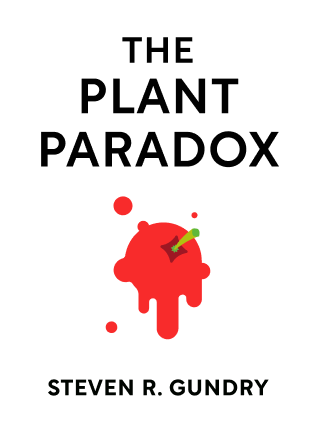

This article is an excerpt from the Shortform summary of "The Plant Paradox" by Steven R. Gundry. Shortform has the world's best summaries of books you should be reading.
Like this article? Sign up for a free trial here .
What is the connection between lectins and inflammation in the body? Do lectins and inflammation have a cause-and-effect relationship? Do lectins cause inflammation?
As a toxin, lectins can cause inflammation in the human body. Read more to see how lectins and inflammation may be responsible for many of the problems you face after eating plants.
Keep reading to find out more about the connection between lectins and inflammation.
Consuming Lectins and the Inflammation Response
Lectins have a multifaceted approach to attack your system. Then, lectins and inflammation resulting from them cause problems.
First, they work on breaking through the mucosal wall that lines your intestines. Lectins are relatively large proteins (compared to the vitamins, minerals, fats, sugars, and simple proteins that your intestinal cells regularly absorb), and they have to try to squeeze through tight spaces between cells in the mucosal wall.
However, if your natural defenses are worn thin, the lectins can bind with certain cell receptors to create a chemical compound that opens spaces between the cells to allow the lectins (and other bacteria and toxins) to get through, causing leaky gut syndrome. Once lectins get through your intestinal wall, they can access your tissues, lymph nodes, glands, and bloodstream. As a foreign protein, your immune system naturally attacks them—and you’ll feel the effects via inflammation and other symptoms.
Second, lectins are designed to mimic other proteins. This means your immune system can’t tell the difference between the foreign lectins and the body’s own natural proteins and consequently attacks its own proteins. Additionally, different proteins instruct cells to do different actions (e.g. store fat, or attack invading organisms) so mistaking the lectins for another protein can cause your body to follow the wrong instructions.
Finally, lectins can bind to certain cell receptors to mimic a hormone or to block a hormone. Hormones are proteins that attach to docking ports on cell walls to instruct the cell on what to do; for example, insulin is a hormone that instructs cells to allow glucose to enter for fuel and store any extra glucose as fat. Hormones naturally leave the dock when they’re done, but lectins bind to these docks and sometimes never leave, meanwhile giving wrong instructions (e.g. chronically storing fat) or blocking the correct instructions. This is one way lectins disrupt communication in the body.
Connection Between Lectins and Inflammation?
Pattern matching is a computer science term for seeking patterns in sequences; when you start typing search terms into Google, it looks for patterns and makes search suggestions.
Your body uses pattern matching to determine which season it is: When you eat sweet foods, your body thinks it’s summer because that’s when fruit is ripe and in-season fruit used to be the only sweet food available to humans. If your body thinks it’s summer, it knows it needs to store fat for the upcoming winter, and if it thinks it’s winter then it focuses on burning fat to survive. Your food choice and lectin intake can confuse your body and disrupt this pattern.
Additionally, your body uses pattern matching to know when your immune system needs to attack a foreign invader to protect your health, but lectins cause unnecessary immune responses that lead to inflammation and disease. So if you want to know do lectins cause inflammation, you have to understand how pattern matching is at play underneath it all.
Health Problems Arise When Patterns Are Similar
How do lectins cause inflammation? Your immune system uses two main types of receptors to keep your body in good working order.
- Toll-like receptors (TLRs) determine whether any protein that enters the body is harmless or harmful. Each protein has something like a barcode, and the TLRs scan this barcode to identify what the protein is and whether the immune system needs to attack.
- G-protein coupled receptors (G-spotters) are the docking ports on cells (mentioned in chapter 1), which scan hormones, enzymes, and cytokines for instructions about what the cell is supposed to do.
The immune system uses TLRs and G-spotters to look for patterns to determine which proteins are friend or foe, and it shares that information with the rest of the body so the defenses can react more quickly and effectively next time a threat enters the body. (Shortform note: This is how vaccines work: The small dose of a virus is enough to teach the body how to respond if it’s exposed again.)
However, since lectins are designed to hurt plant predators, they have barcodes that look similar to harmful barcodes, so the body begins attacking itself.
Additionally, the confusion can compound the connection between Lectins and inflammation and cause even bigger problems. This is the chain of events that can lead to an autoimmune disease:
- Lipopolysaccharides (LPSs) are fragments of bacteria that your body mistakes for full-strength bacteria, so your immune system responds with a full-fledged attack, causing inflammation.
- When your immune system detects lectins that look similar to the LPSs, it ups its attack, causing more inflammation.
- The lectins also look similar to many of the proteins on your organs, nerves, and joints; your immune system sees these proteins and thinks they’re lectins. In an effort to defend your body from further harm, the immune system intensifies the attack even more, now against your own proteins.
Ailments That the PPP Can Alleviate Or Cure
The author has worked with hundreds of patients and credits the Plant Paradox Program with alleviating and even curing dozens of diseases and conditions, many related to the connection between lectins and inflammation. Ailments include:
- Allergies
- Arthritis
- Asthma
- Cancer
- Chronic pain
- Crohn’s
- Dementia
- Depression
- Eczema
- Heartburn
- Infertility
- Irritable bowel syndrome (IBS)
- Joint pain
- Lupus
- Migraines
- Multiple sclerosis
- Osteopenia and osteoporosis
- Parkinson’s
- Psoriasis
- Rheumatoid arthritis

———End of Preview———
Like what you just read? Read the rest of the world's best summary of Steven R. Gundry's "The Plant Paradox" at Shortform .
Here's what you'll find in our full The Plant Paradox summary :
- Why eating more vegetables isn't enough, and why some vegetables are toxic to your body
- The science behind lectins and how they tear apart your body, making you fat and sick
- The 6-week program to get your body back on healthy grack






